
Hugo Lhuillier
@hugolhuillier.com
Economist / Assistant Professor at Columbia University.
Works on macro, spatial, trade, and labor.
https://www.hugolhuillier.com/
Works on macro, spatial, trade, and labor.
https://www.hugolhuillier.com/
Long-story short:
Employers —and how workers reallocate across them— are crucial at explaining spatial wage disparities.
🔗 If you want to know more: www.hugolhuillier.com/files/papers...
Employers —and how workers reallocate across them— are crucial at explaining spatial wage disparities.
🔗 If you want to know more: www.hugolhuillier.com/files/papers...
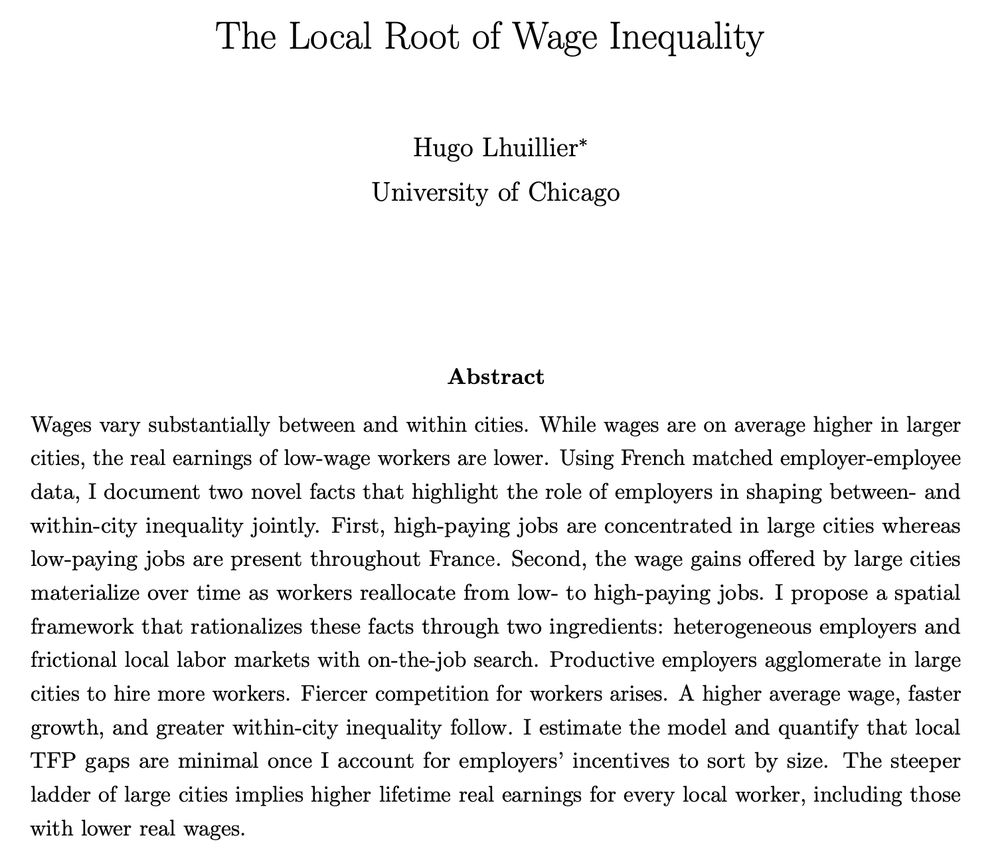
June 6, 2025 at 2:53 PM
Long-story short:
Employers —and how workers reallocate across them— are crucial at explaining spatial wage disparities.
🔗 If you want to know more: www.hugolhuillier.com/files/papers...
Employers —and how workers reallocate across them— are crucial at explaining spatial wage disparities.
🔗 If you want to know more: www.hugolhuillier.com/files/papers...
Understanding the mechanisms behind spatial inequality matters!
For instance: what happens when job mobility slows down?
Big places lose their comparative advantage...
⬇️ Productivity, wages, and the number of workers in large cities shrink
⬆️ Smaller cities expand
For instance: what happens when job mobility slows down?
Big places lose their comparative advantage...
⬇️ Productivity, wages, and the number of workers in large cities shrink
⬆️ Smaller cities expand

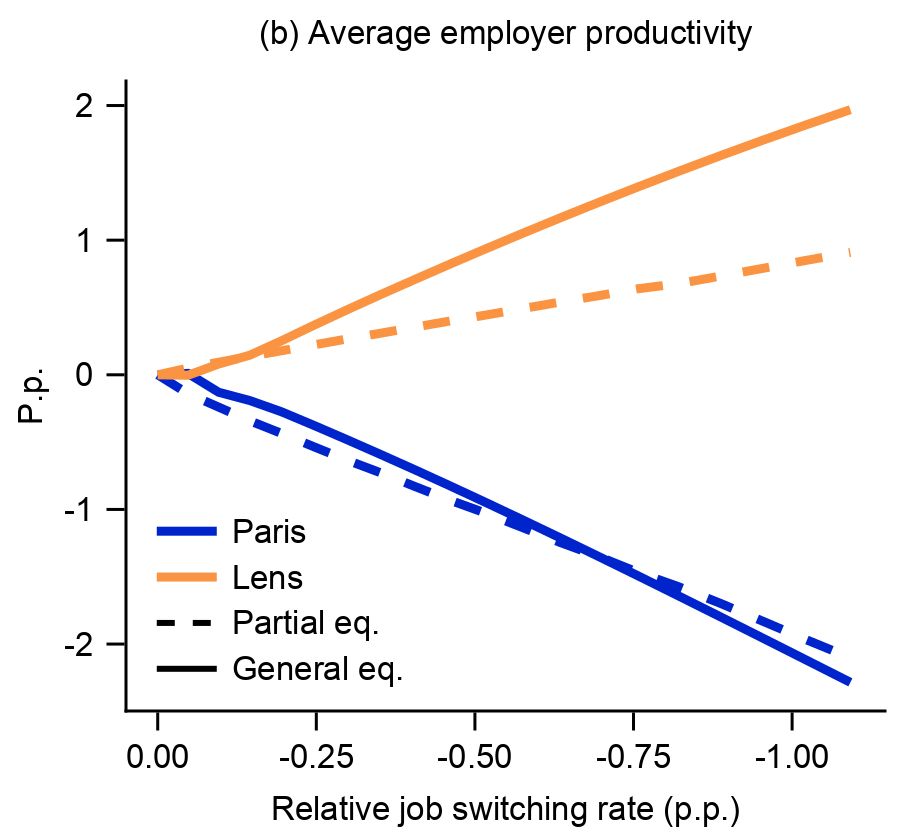
June 6, 2025 at 2:53 PM
Understanding the mechanisms behind spatial inequality matters!
For instance: what happens when job mobility slows down?
Big places lose their comparative advantage...
⬇️ Productivity, wages, and the number of workers in large cities shrink
⬆️ Smaller cities expand
For instance: what happens when job mobility slows down?
Big places lose their comparative advantage...
⬇️ Productivity, wages, and the number of workers in large cities shrink
⬆️ Smaller cities expand
🎯 Key quantitative takeaways
— Spatial wage disparities arise without city-level productivity gaps
— Lifetime earnings are higher in bigger cities — even for workers with lower real earnings as they climb a steeper ladder
— Spatial wage disparities arise without city-level productivity gaps
— Lifetime earnings are higher in bigger cities — even for workers with lower real earnings as they climb a steeper ladder

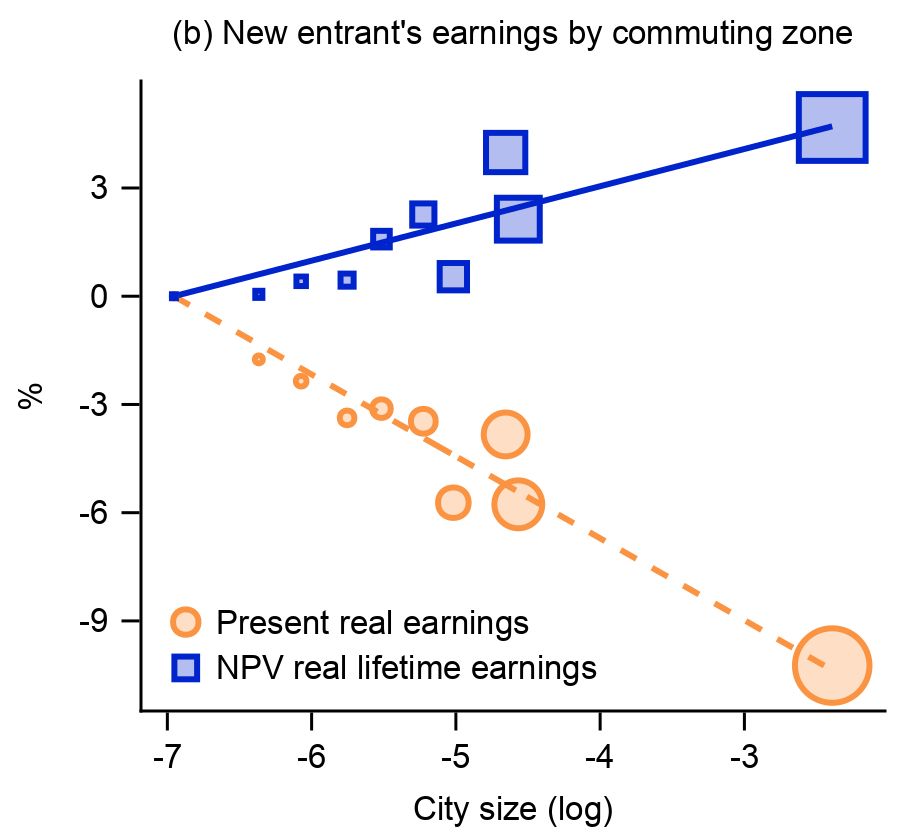
June 6, 2025 at 2:53 PM
🎯 Key quantitative takeaways
— Spatial wage disparities arise without city-level productivity gaps
— Lifetime earnings are higher in bigger cities — even for workers with lower real earnings as they climb a steeper ladder
— Spatial wage disparities arise without city-level productivity gaps
— Lifetime earnings are higher in bigger cities — even for workers with lower real earnings as they climb a steeper ladder
How does this work?
Productive employers agglomerate in big places to maximize their size
✅ The local competition for workers intensify ➡️ high-paying jobs are concentrated there
✅ Low-paying jobs persist — because workers out of unemployment have little bargaining power
Productive employers agglomerate in big places to maximize their size
✅ The local competition for workers intensify ➡️ high-paying jobs are concentrated there
✅ Low-paying jobs persist — because workers out of unemployment have little bargaining power
June 6, 2025 at 2:53 PM
How does this work?
Productive employers agglomerate in big places to maximize their size
✅ The local competition for workers intensify ➡️ high-paying jobs are concentrated there
✅ Low-paying jobs persist — because workers out of unemployment have little bargaining power
Productive employers agglomerate in big places to maximize their size
✅ The local competition for workers intensify ➡️ high-paying jobs are concentrated there
✅ Low-paying jobs persist — because workers out of unemployment have little bargaining power
To explain this, I build a spatial model with two features:
1️⃣ Employers vary in productivity, and they choose where to produce
2️⃣ Labor markets are frictional, and workers climb local job ladders
1️⃣ Employers vary in productivity, and they choose where to produce
2️⃣ Labor markets are frictional, and workers climb local job ladders
June 6, 2025 at 2:53 PM
To explain this, I build a spatial model with two features:
1️⃣ Employers vary in productivity, and they choose where to produce
2️⃣ Labor markets are frictional, and workers climb local job ladders
1️⃣ Employers vary in productivity, and they choose where to produce
2️⃣ Labor markets are frictional, and workers climb local job ladders
Using French matched employer-employee data, I find:
📌 High-paying jobs are concentrated in big cities
📌 Low-paying jobs are everywhere
📌 Workers access high wages in large cities as they switch from low- to high-paying jobs over time
📌 High-paying jobs are concentrated in big cities
📌 Low-paying jobs are everywhere
📌 Workers access high wages in large cities as they switch from low- to high-paying jobs over time
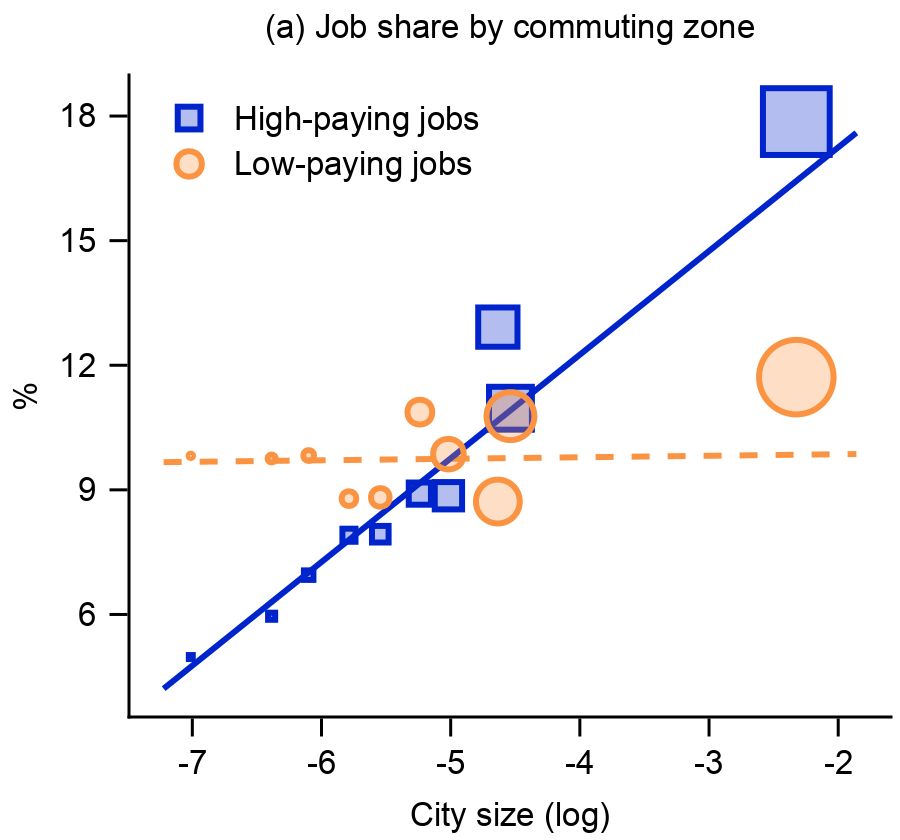
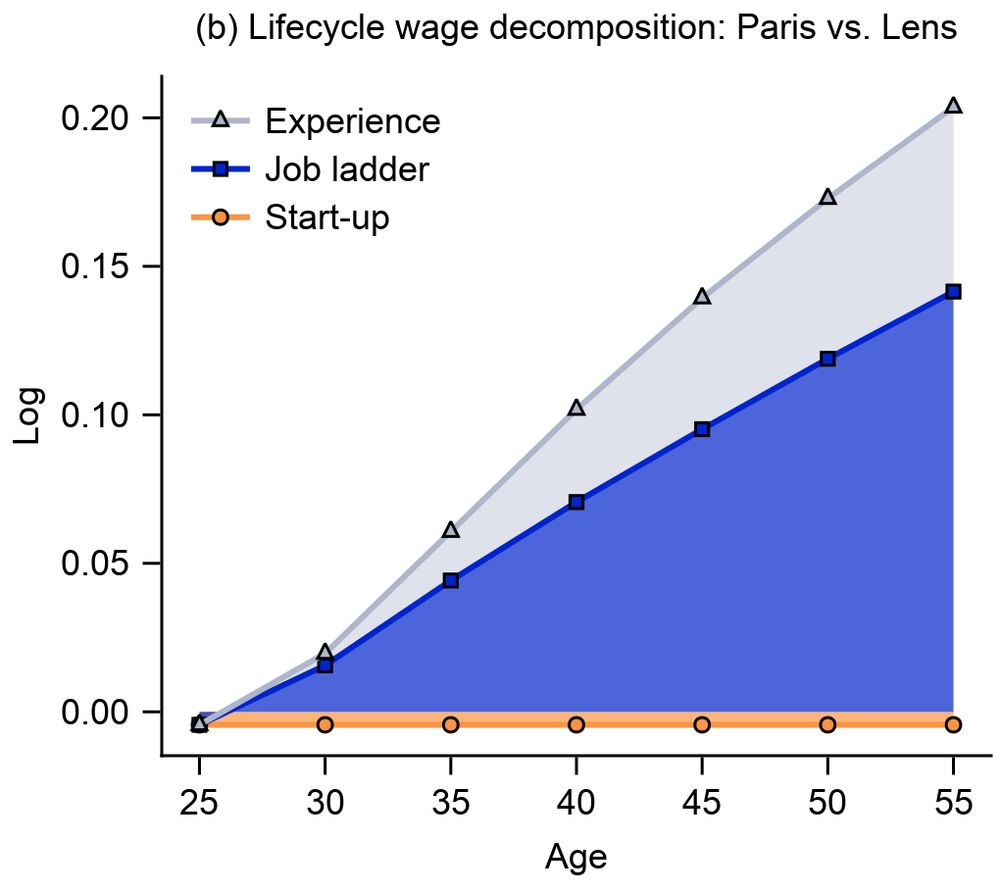
June 6, 2025 at 2:53 PM
Using French matched employer-employee data, I find:
📌 High-paying jobs are concentrated in big cities
📌 Low-paying jobs are everywhere
📌 Workers access high wages in large cities as they switch from low- to high-paying jobs over time
📌 High-paying jobs are concentrated in big cities
📌 Low-paying jobs are everywhere
📌 Workers access high wages in large cities as they switch from low- to high-paying jobs over time

